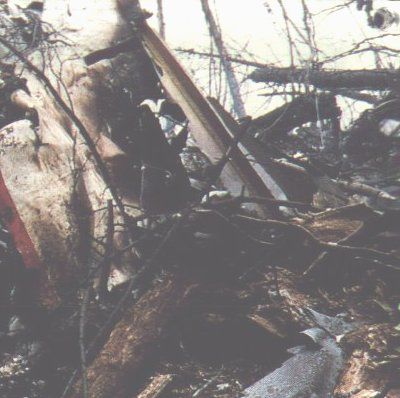Introduction
Air travel is considered the safest mode of transportation. It has been the main means of enabling global connectivity. However, multiple devastating aviation disasters, at the cost of many lives, have contributed to making it safer. These disasters, though tragic, have helped identify aircraft vulnerabilities and led to improvements in airplane design. Recently, a London-bound plane taking off from India crash-landed in the city of Ahmedabad. There were 242 people on board, and only one survived the tragic accident. Although this incident is one of the few in recent history, it served as a reminder that air travel still has areas for improvement. This article highlights ten of the worst aviation disasters in history, and the efforts aimed at making air travel as safe as it is today, while also emphasizing that further improvements are required.
1. Tenerife Airport Disaster
The Tenerife airport disaster, which took place on March 27, 1977, is the deadliest aviation accident in history. On March 27, 1977, a terrorist bombing was carried out at the Gran Canaria Airport by extremist fighters, because of which inbound flights were diverted to the smaller Los Rodeos Airport in Tenerife. Multiple flights from all over the world landed at this airport, including the KLM flight 4805 from Amsterdam and Pan Am flight 1736 from Los Angeles.
Due to thick fog and miscommunication caused because of all flights using the same radio frequency to communicate with the control room, a tragedy unfolded when the KLM flight tried to take off while the Pan Am flight was still taxiing. The KLM plane collided with the Pan Am, resulting in the Pan Am catching fire.

At the time of the collision, the KLM aircraft had already started its takeoff, but soon after the collision, it crashed back into the runway, catching fire on impact. This incident tragically claimed the lives of all 248 passengers and crew on the KLM flight, while 70 individuals of the 335 present on the Pan Am flight died, with 70 surviving, 9 of whom later succumbed to their injuries. A total of 583 lives were lost in this incident, which is the highest number of deaths in an aviation disaster in history.
Although the incident was devastating, it consequently led to significant changes in aviation safety, including the adoption of standardized communication phrases for better communication between the pilot and the control room. In addition, after this accident, English was declared the common language to be used in aviation. First officers and flight engineers were also encouraged to question pilot decisions, especially during emergencies.
2. Japan Airlines Flight 123
On August 12, 1985, Japan Airlines Flight 123 was flying from Tokyo to Osaka. This Boeing 747 plane had a total of 524 people onboard, including 509 passengers and 15 crew members, and was taking off for its sixth flight of the day on the same route. The aircraft successfully took off from Tokyo’s airport, but just 12 minutes after takeoff, when the plane had reached an altitude of 24,000 feet, the aircraft’s tail separated in midair. The detachment of the tail created a hole in the plane, disrupting the cabin’s air pressure, which made breathing extremely difficult and caused panic.
Additionally, the tail had ripped with it the fuselage and rudder, which caused the pilots to lose control over the aircraft. Although the situation was extremely unfavourable, the pilots heroically managed to descend the plane to a height of 5,000 feet. Although it made breathing easier for the passengers and the crew, the pilots still did not have enough control of the airplane to land it safely, and it ultimately crashed into a mountain range near Tokyo. Only 4 of the 524 onboard survived this tragic incident. An investigation later revealed that the aircraft’s tail had hit the runway during takeoff seven years earlier, but the repairs made to fix the damage were faulty, which was ultimately identified as the cause of the disaster.

3. Charkhi Dadri Mid-air Collision
In the 1990s, Delhi’s airport in India was a common layover for many international flights. Despite heavy air traffic, the airport had only one air corridor for commercial flights, while three were reserved for military use only. While the airport generally managed the traffic of both inbound and outbound flights along the same corridor, tragedy struck on November 12, 1996, when Kazakhstan Flight 1907, which was inbound, and Saudi Arabian Flight 763, which was taking off, collided midair above the Delhi airport, resulting in 349 losing their lives.
The cause of the incident was initially unclear, however, investigation of the black boxes found from both planes revealed that the control tower directed both flights to maintain specific altitudes, keeping them at least 1,000 feet apart, done to avoid collision between the planes, confirming that the accident was not caused by the negligence or mistake of the control room officers. An important vulnerability that was addressed through this case was the lack of updated technology at the Delhi airport at the time of the incident, as the control room officer had to rely on the information regarding the altitude that was given to him by the pilots.

In this case, the Saudi pilot reported flying at 14,000 feet, while the Kazakh flight claimed 15,000 feet, and both were instructed to maintain the same altitude, keeping them 1,000 feet apart. However, post-accident investigations showed that although the Kazakhstan flight reported 15,000 feet, it was descending and was 10 feet below the Saudi aircraft, which had held at 14,000 feet as instructed. The reason for the Kazakhstan flight’s descent remains unknown. After this tragedy, Delhi Airport was upgraded with new technology, and it now has multiple air corridors for commercial flights.
4. Saudi Flight 163
On August 19th, 1980, Saudia Airlines Flight 163 took off from Riyadh en route to Jeddah with 301 passengers, mostly pilgrims. Immediately after takeoff, the pilot noticed an issue with the airplane, and declared an emergency to address which, he decided to turn back to Riyadh for an emergency landing. Emergency services prepared for the landing and waited at the runway for the plane to land so they could evacuate the plane.
When the plane finally landed, it failed to stop near the positioned emergency workers; instead, the pilot taxied down the runway, leading emergency personnel to run to reach the airplane, delaying the evacuation of the plane. They waited outside for the passengers to unboard the plane, but no one exited. Minutes later, the plane caught fire while the passengers were still on board. The cause of the fire could not be determined, but it was found to have originated in the rear end.

The tragic incident resulted in all 301 on board losing their lives. The crash was later investigated using the plane’s black box, which revealed that the captain failed to recognize the severity of the situation and spent at least five minutes discussing options with the crew on what to do in this emergency, and did not facilitate a swift evacuation of the plane before the fire worsened. The pilot also did not stop the plane abruptly on the runway, wasting precious time that could have been used to evacuate the passengers.

5. Turkish Airlines Flight 981
The Turkish Airlines Flight 981 disaster is considered the deadliest single aviation accident of its era. On March 3rd, 1974, a DC-10 flying from Paris to London crashed shortly after takeoff. Due to strikes by many British airlines, more passengers than usual chose Turkish Airlines. Just 3,300 meters above Paris, tragedy struck when two rows of seats near the back of the plane suddenly vanished, causing the floor to break apart and destroying the cabin’s pressure integrity. The pilot lost control, and the plane crashed, killing all 346 onboard.

The investigation revealed that two years earlier, another DC-10 experienced a similar failure during a pressure test of its cargo door; in this case, it was a Turkish Airlines aircraft. It was also found that the airline was aware of the design flaw because, years earlier, the cargo door had failed a pressure test twice—once two years before the Windsor incident and again four years before the Turkish crash—and the issues had not been fixed. Additionally, McDonnell Douglas, the plane’s manufacturer, was fined $18 million, leading to financial trouble, bankruptcy, and eventual acquisition by Boeing.
6. Air India Flight 182
On June 23rd, 1985, a Boeing 747 en route from London to Mumbai, with a layover in Delhi, suddenly vanished from the radar mid-air. The plane had been targeted by a terrorist bombing, which was believed to be carried out by the extremist Sikh group Babbar Khalsa, which had openly threatened to bomb Air India planes as revenge against the Indian government for the events at the Golden Temple in Amritsar, where 1,200 Sikhs were killed.

Although the group was suspected of committing the attack, the identity of the person who booked the bag containing the bomb and brought it onto the plane remains unknown. The bomb exploded in the cargo hold 120 miles off the coast of Ireland, causing the plane to crash into the Atlantic Ocean. None of the 321 people on board survived the tragic attack.
7. Iran Air Flight 655
On July 3rd, 1988, an Iranian passenger plane en route to Dubai was shot down by a US naval warship in the nearby waters. At the time, the Iran-Iraq war was ongoing, and on that morning, the US warship clashed with Iranian ships. The naval ship’s captain later claimed that, considering the context, it was clear that the approaching ship was perceived as a threat, which led to the decision to fire. Two missiles were launched directly at the passenger plane, resulting in the deaths of all 290 people onboard. Initially, the US did not accept responsibility, asserting that the warship did not act negligently and was not at fault. Iran brought the case to the ICJ, and in 1996, the US accepted responsibility for the warship’s actions and agreed to compensate.

8. American Airlines Flight 191
A tragic incident occurred at O’Hare International Airport on May 25, 1979, when a DC-10 took off and, almost immediately, one of its engines tore away from the aircraft and crashed onto the runway. Within minutes, the entire plane crashed into a nearby hangar, igniting a fire. All 271 passengers on board, along with two workers in the hangar, tragically lost their lives.

Investigations revealed that the engine separation was caused by a routine inspection conducted two months prior, during which the entire engine assembly was improperly removed and reattached. This led to multiple stress fractures, ultimately resulting in the incident. The investigation also highlighted that a plane can fly safely on just one engine, yet the aircraft had two engines attached and operational at the time. Investigators concluded that the accident was preventable and resulted from pilot error. American Airlines was fined $500,000 for the incident.

9. Pan Am Flight 103
On December 21, 1988, Pan Am Flight 103 was en route from London to New York when the Boeing 747 crashed into a residential area in Lockerbie, Scotland, igniting a fire upon impact. The crash caused extensive damage on the ground and resulted in the deaths of all 259 people on board, in addition to 11 Lockerbie residents who lost their lives in the incident. Investigations revealed that the crash was the result of a bomb blast in the cargo hold of the plane, which caused the cockpit to separate from the aircraft mid-air. Further investigation linked the perpetrators to Libyan officials, and the Libyan government formally accepted responsibility for the bombing, agreeing to pay nearly $3 billion to the victims’ families.

10. EgyptAir Flight 990
The devastating disaster of EgyptAir Flight 990 involved a tragic pilot suicide committed by the relief first officer of the flight, Ghameel Al Batouti, who deliberately crashed the aircraft into the Atlantic Ocean, killing all 217 people on board. As soon as the Ghameel was left alone in the cockpit for a brief moment, he disconnected the co-pilot, pushed forward on the control column, and shut off the engines of the plane. He then directed the plane to crash nose-first into the ocean. The reasons behind the first officer’s actions may never be fully understood, but it is believed that he was due to be investigated by authorities upon arrival in Cairo, which may have acted as a catalyst for his act. After this incident, regulations were implemented that now require at least two crew members to be present in the cockpit; however, there is no international regulation enforcing this change.

Conclusion
The aviation industry has experienced many remarkable advancements, but it also has a long history of tragic accidents. Although these events are devastating, each accident has contributed to improvements in air travel safety, whether through changes in aircraft design or a better understanding of safety protocols. Despite these advancements, discussing these disasters serves as a reminder that the aviation industry is continuously evolving, and the journey to make air travel safer is still ongoing.
If you want to submit your articles and/or research papers, please visit the Submissions page.
To stay updated with the latest jobs, CSS news, internships, scholarships, and current affairs articles, join our Community Forum!
The views and opinions expressed in this article/paper are the author’s own and do not necessarily reflect the editorial position of Paradigm Shift.
Fatima Mazhar is a 9th-semester law student at the International Islamic University, Islamabad. She is currently serving as the chairperson of the Law Students Council, Pakistan.



